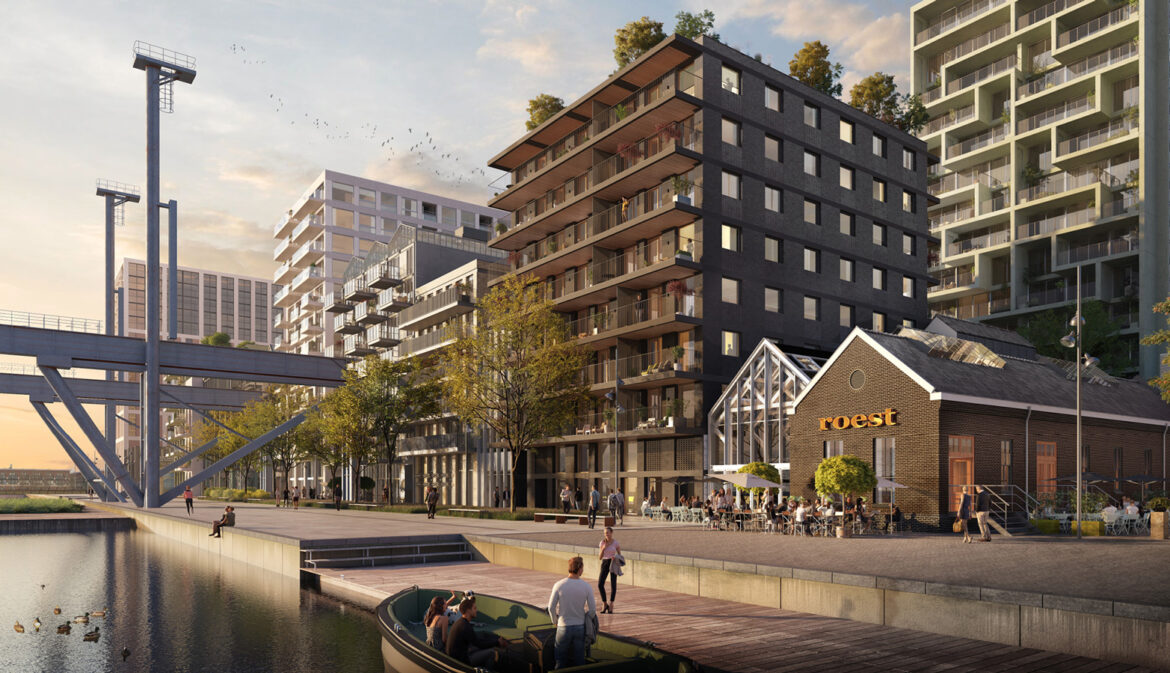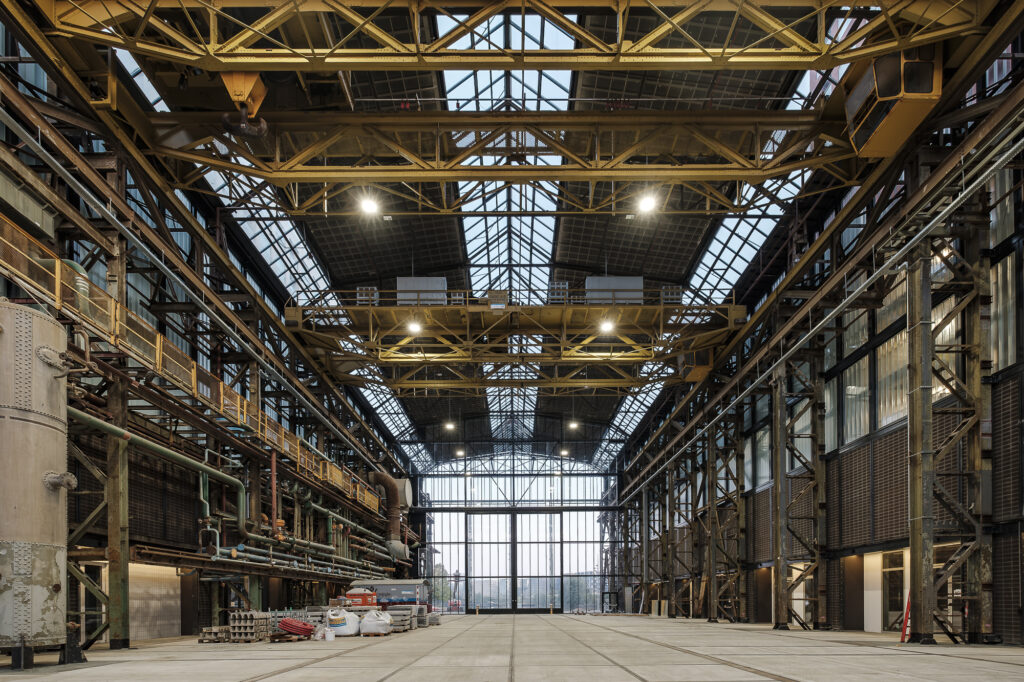
OP OOSTENBURG
NEW URBAN ENVIRONMENT
Like many islands, Oostenburg has had the opportunity to develop its own identity as an isolated area. The VOC shipyards were located here from 1660 to 1800. Even after that, Oostenburg remained an industrial place. The five Van Gendthallen were built at the beginning of the 20th century for the Werkspoor-Stork machine factory. This history makes the location unique.
In an advice to Stadgenoot and the municipality, TU Delft indicated that these cultural area values can become the starting points for a new, extraordinary and vital urban environment. The atmosphere of industry has never left Oostenburg. The halls are prominently present. There is still a section of railway tracks. And on the quay there are still the crane cranes of the Werkspoorhal, with which material was lifted over the water onto the quay.
INNER CITY DEVELOPMENT
Oostenburg is just one in a row of more isolated neighborhoods with their own inner-city development in the same part of Amsterdam. If you ‘read’ all the islands from left to right, the history of inner-city development unfolds. The most westerly is the Marineterrein with its 17th-century fleet warehouse. The site forms its own area on the island of Kattenburg, which was renovated on a large scale in the 1970s. Based on the ideals of the time, an attempt was made to introduce modernism. The island now encompasses a somewhat strange mix of demolition and new urban development. We also see the same typology on the adjacent island of Wittenburg, and further east in the Dapperbuurt. Once back at Oostenburg, the 19th-century Czaar Peterbuurt is attached to it to the south. You can even add the triangular shard of Funen, from the same time as the Czaar Peterbuurt, but redeveloped into a residential location in the 1990s, to this timeline of urban development. John Bosch: “Oostenburg can be seen as the last generation of this inner-city development. It is one of the larger interventions in the historic center of Amsterdam. In addition, the island also responds to its own encapsulated history.”
COLLABORATION PLOTS 4 + 5 AND 3
“Project developer VORM initially asked OZ to jointly register for plots 4 + 5. In the first phase of the registration, OZ created the urban development plan, with the Urhahn Master Plan as a starting point,” Zwiers explains about acquiring the contract. to. The urban design was the starting point, as was the principle that each block is at least two floors higher or lower compared to its neighbor. After presentation to the assessment committee, OZ was one of five parties that were allowed to proceed to the second tender phase. Zwiers: “We then asked the young agencies Workshop, BETA and FLUX to join us. With their strong philosophy they were able to strengthen our urban development concept. What is strong about Workshop is their city- and people-oriented approach. BETA monitored the presence of Healthy Urban Living in the second phase.” For the tender for plot 3 with the former industrial Werkspoorhal, the request was submitted in the same combination, with the addition of Space Encounters and LOLA.
SOFT CITY
Human behavior: How do you develop a successful new urban district? The challenges of bringing a new neighborhood to life are a point of concern and attention for every client and urban planner. OZ and the other agencies apply the soft city concept to the plots. Zwiers: “A successful city has spontaneity as an important characteristic. As a resident, you happen to come across a catering establishment or local resident. It increases spontaneity and interaction in behavior. A successful city is a combination of all those individual human actions. For Oostenburg, soft city was therefore an important starting point. We are not creating buildings here, but a piece of layered city where we facilitate human actions.”
2020: the importance of public space is increasing
The use of public space is increasing in these times of corona. Especially in cities where not everyone has their own garden or balcony, the importance of a public space that is usable for city residents has immediately become clear. This results in an overcrowded Vondelpark on a warm spring day that is subsequently closed.
OZ has recognized this importance from its vision on urban planning for some time. Bosch: “Who owns the public space? OZ is often involved in this type of area development.
Kattenburg, which is often mentioned in relation to this project, was built based on a kind of ideology to realize as many homes as possible, but at the expense of a well-thought-out public space. There are few facilities. The school and the playground, everything is predefined, which leaves no room for spontaneity.” And Zwiers adds: “If you want people to meet each other, you have to create spaces where that is possible. The Netherlands has never paid much attention to public areas. But with the country warming up, there is a huge opportunity for urban planners and architects. From the very first moment of the competition, both the client and the young agencies endorsed soft city as a starting point. The workplace at Oostenburg is usable. For a pop-up, a BBQ, a community lunch, to put down your couch and look at the water from the VOC quay.”
WERKSPOORHAL
The most eye-catching element is the former Werkspoorhal, the beating heart of the Oostenburg community. The hall itself, where the production of machines and ship engines used to be, will be an engine for connection in the coming centuries. The renovated Werkspoorhal will function as a large enclosed neighborhood square for the residents.

The steel structure of the hall is refurbished where necessary and the façade completely renovated. The sliding doors are placed a few meters inward from the facade. And the floor in the hall and outside is made of the same stelcon plates. This creates a natural flow from inside to the outdoors.
